Today at 3DWork we are going to canva a new integral extruder called BIQU H2 that the Chinese accompany BIQU has developed for its recent BIQU BX printer. In pillowcase you are not aware, this new printer was with success financed through the famed Crowdfunding platforms Indiegogo and Kickstarter newly.
This new typewrite of "entire" extruder, as I like to claim it, allows you to colligate the heater ba directly to the extruder without the deman to supply any heatsink in 'tween, as is the case with the BMG or Titan extruders. With the added benefit of eliminating unessential components, reducing size and weight.
However, although this extruder has been planned specifically for the BIQU BX printing machine, information technology will live available for sales agreement as some other product in its catalog in middle-January. At first the 24V version of the same and approximately 1 month later the 12V translation will be launched, following the roadmap established aside BIQU.
Before continuing I would like to remind you that we have a large community in our Wire channel, where we share all our doubts and experiences. If you want to be part of it, have no qualms about joining.
Brief intromission
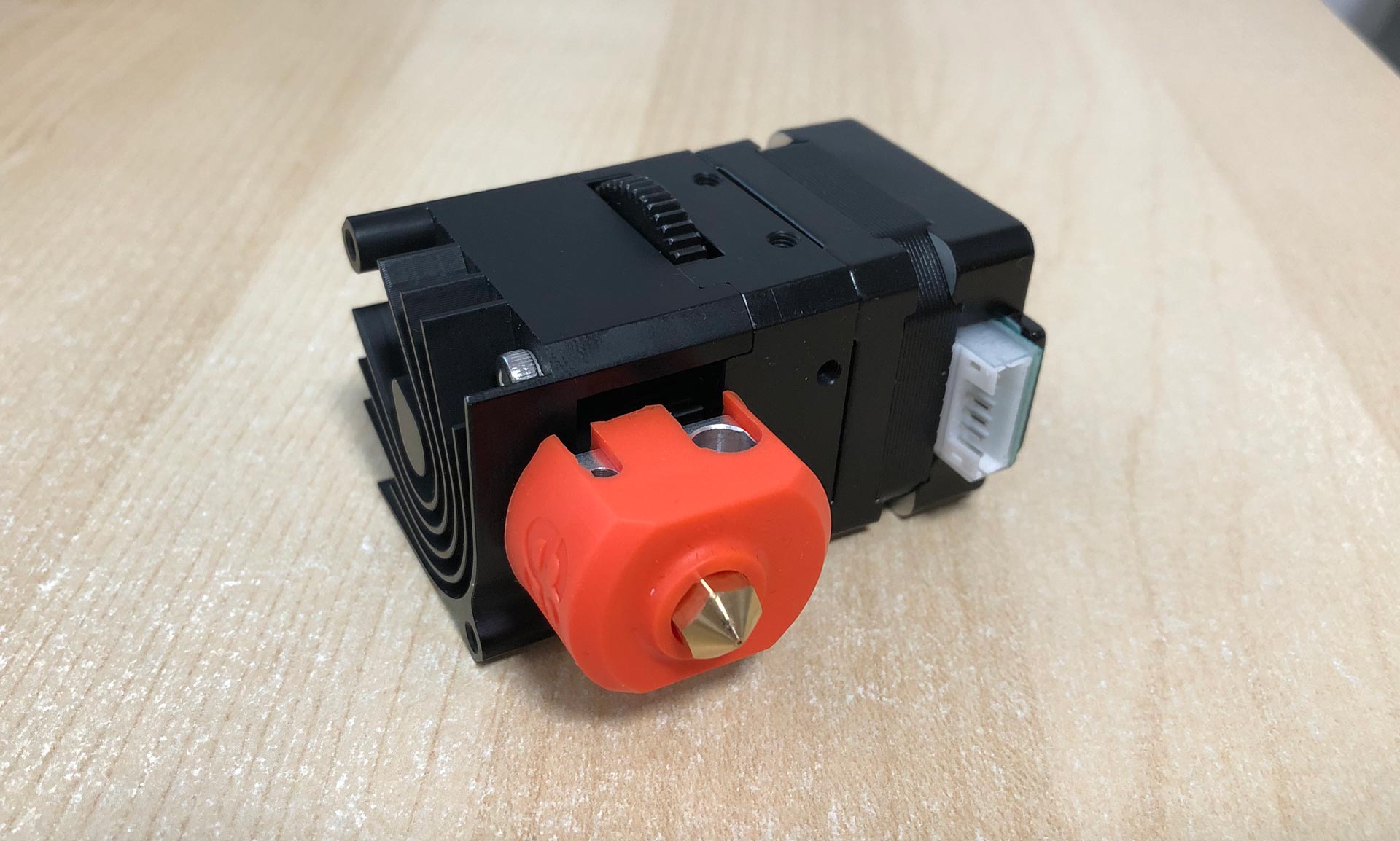
For some clock today, different extruders have been appearing on the market that include fully structured hotends, facilitating their sequent mounting in printers and offering us really spectacular performances.
A clear example – and a open up in this type of extruder – is the substantially-known Hemera extruder from the company E3D, of which we prepared an article several clock ago that you can read in the next link.
This extruder entered the commercialize strong and showed U.S. a new direction of approaching extrusion + hotend systems (integral). However, the Hemera extruder was non without problems that the company itself recognized or s time ago and that they are still correcting for time to come productions (more information at this link).
Fortunately, and thanks to our friends at BIQU/BigTreeTech, we at 3DWork have gotten a BIQU H2 extruder in advance to play with. And by the way, analyze a bit its main characteristics and operation. I hope this clause can be of use to you.
As a curiosity to indicate that the name of the H2 extruder refers to the chemical element of H. I personally detested chemistry, we were wholly incompatible, but for certain some of you already know that hydrogen is the lightest element in the periodic table (1.00784 u). And extrapolating the idea, it is however a fairly accurate doctrine of analogy 🙂
Opening the package (Unboxing BIQU H2)
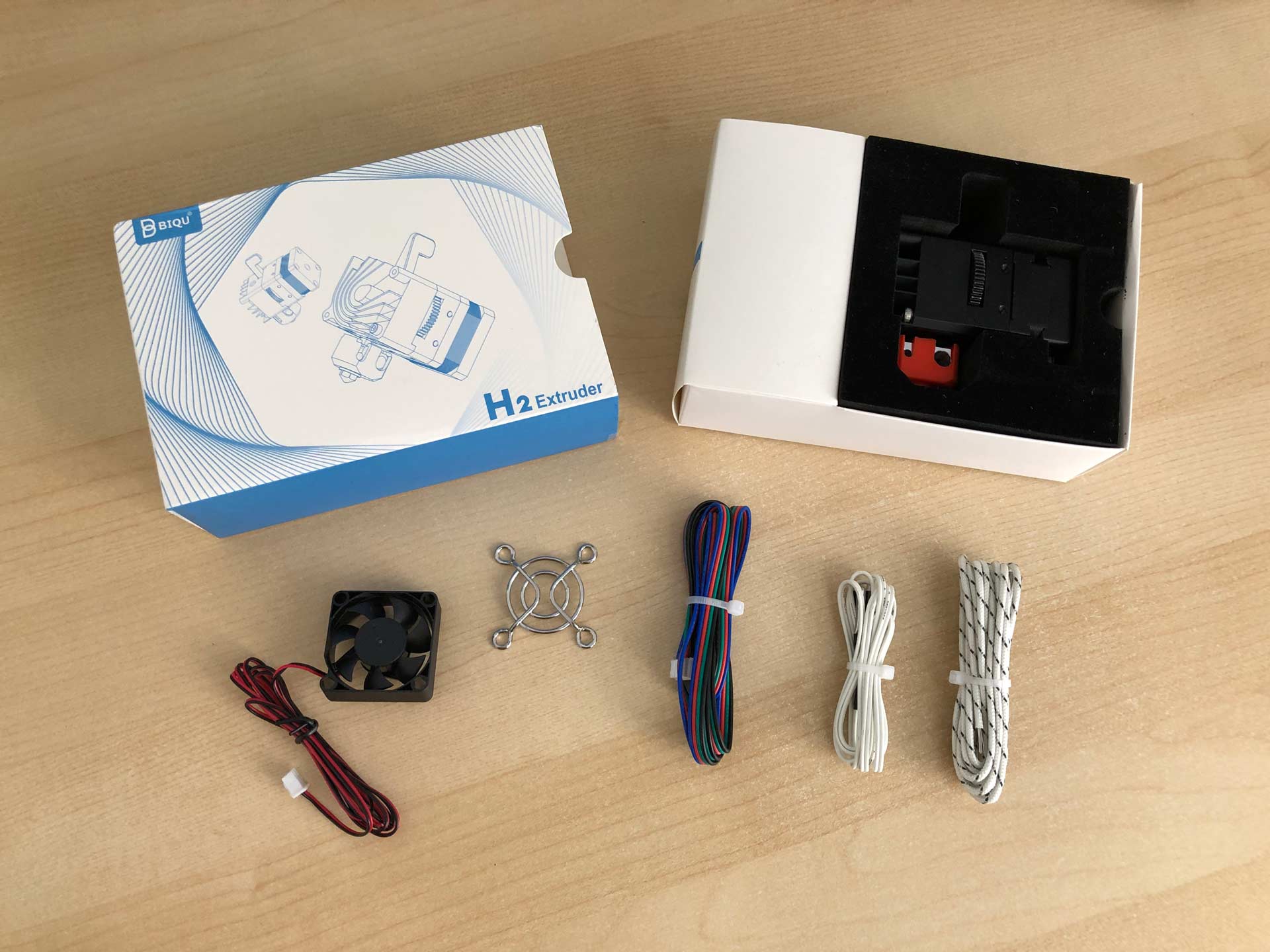
Going away behind the chemistry, we can see that the BIQU H2 extruder is presented to us in a miniature package, entirely protected and with a small instructions inside.
As was common altogether components of this type, the pack includes the Thermistor, the thermal resistance for the block, the NEMA14 motor cable and the 3510 fan with its metal protector.
Already mounted on the hotend, we can assure a silicone "sock" with the logotype of Phaetus giving us a clue as to World Health Organization is the manufacturer of the hinder and nozzle.
This "sock" will play a protective covering function and will help to partly avoid heating plant losses during the printing.
BIQU H2 General features
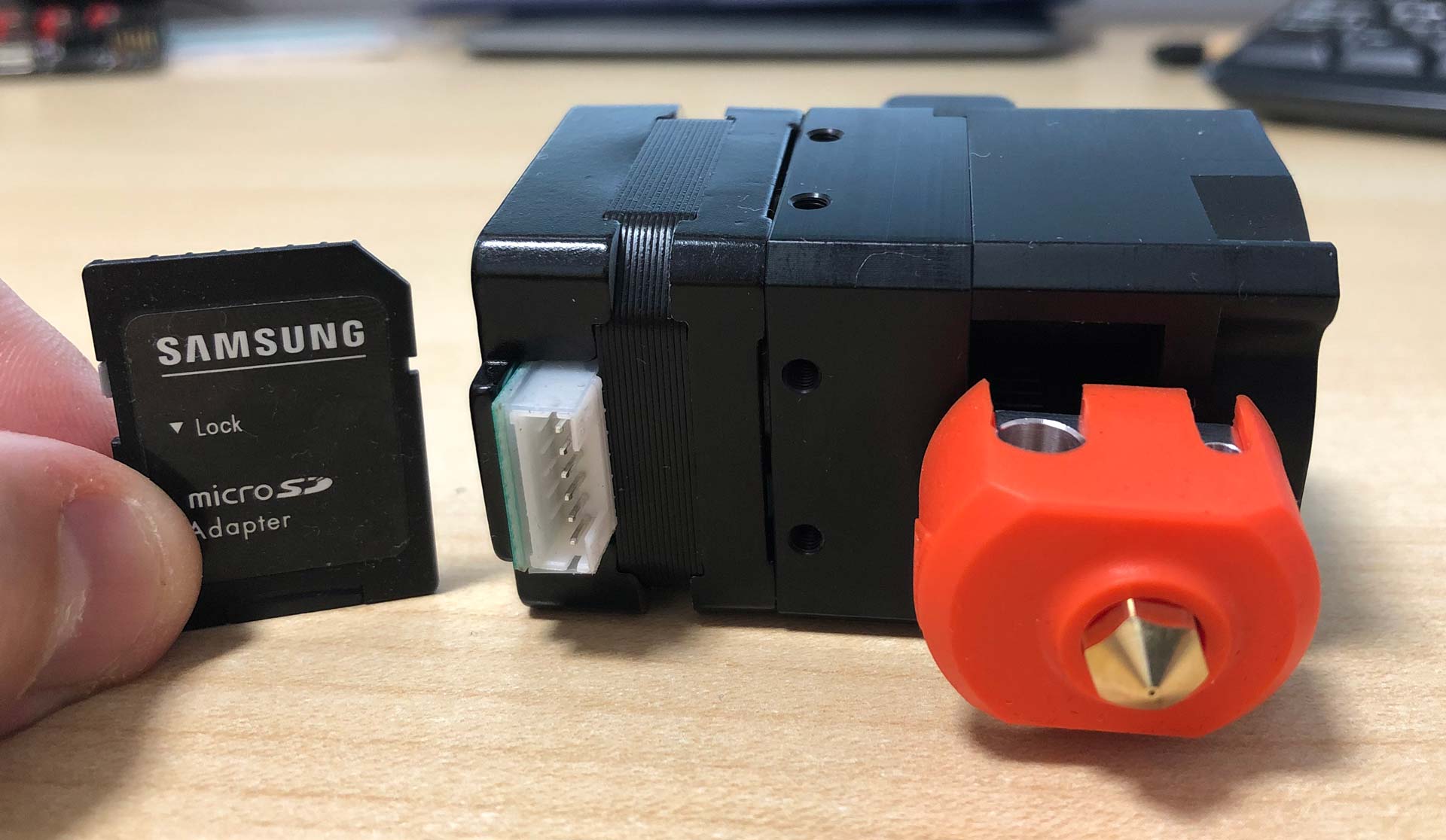
The BIQU H2 Extruder offers us the office of a duple geartrain system but with a impressive size (60x35x35mm). Which makes it one of the lightest happening the commercialize, something that will delight any exploiter who works with high speeds.
The size, As you keister encounter in the trope higher up, is extremely concise. By putting it in the ribbon of your bridge player you can go out the incredible reduction in size to which information technology has been subjected, offering us only 219g. of weight.
For this they rich person had to use a stepper motor reduced to the tokenish reflection and adjust the extruder body to the same extent, something that they have achieved without any problem. In the image above you can see to it a memory calling card next to the engine for reference.
Another feature to highlighting is that can print any case of material, always clearly inside its operating temperature range. This substance that materials much as PLA, ABS, ASA, PETG, TPU/TPE, Nylon, HIPS, PVA and a long and so forth are completely eligible for handling.
Additionally, the inside of the barrel and nozzle have been urbane with a surface timbre of 0.4Ra (Roughness Average). Something that will notably supporte prevent possible jams in our filaments.
However, you should always pay special attention to the configurable parameters. Filaments such as ABS, TPU/TPE or Nylon itself require special parameters and conditions to be printed correctly (it does not depend solely on the extruder). So it is always important to keep that in creative thinker.
Weight and sizing
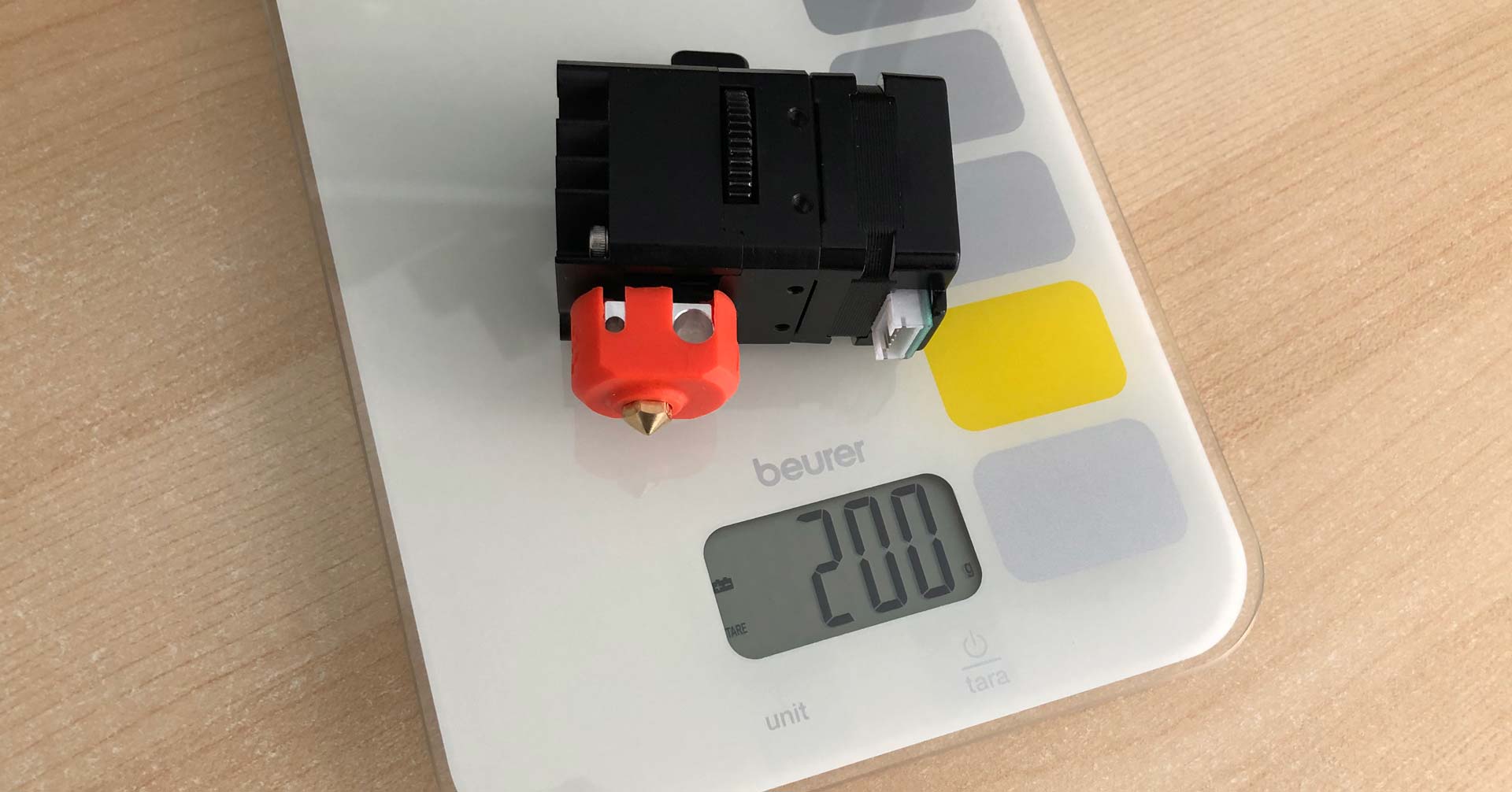
We are facing an ultra-small mini-extruder (60x35x35mm) and Very-light. If we compare it with other current extruders in the same segment, the BIQU H2 extruder brings America a drastic reduction in weight.
It weighs approximately 219 grams, an astounding and worthy fact. If we compare information technology with any of its direct competitors, such as the Hemera from the manufacturer E3D (388 grams) or the Intercellular substance from TriangleLabs (357 grams), we will pick up that information technology is quite far from them in this regard.
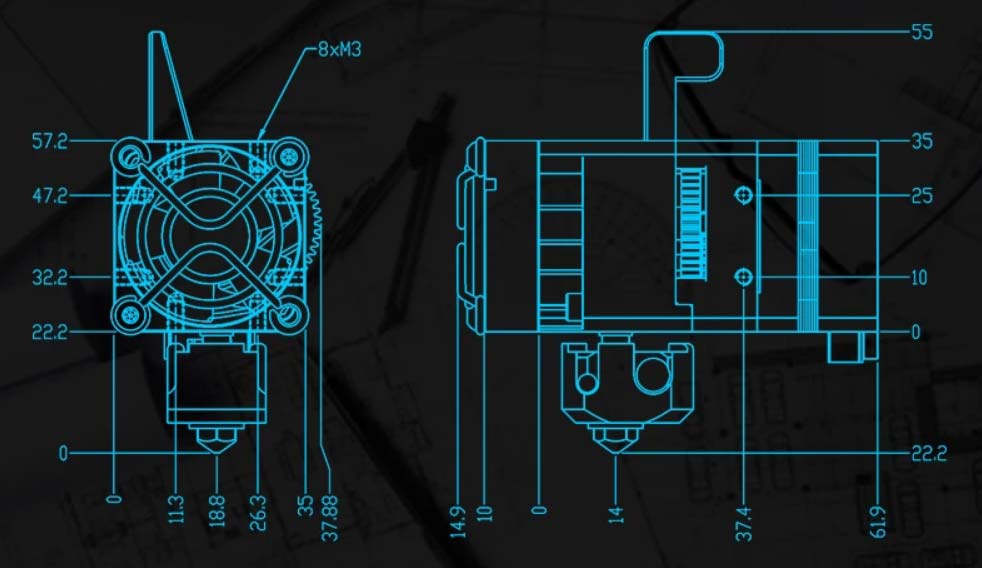 The weight of the guide in our 3D printers is a value to take into account, since IT is directly bound up to the photographic print character imputable the inactivity that the weight can generate.
The weight of the guide in our 3D printers is a value to take into account, since IT is directly bound up to the photographic print character imputable the inactivity that the weight can generate.
Having an extrusion system equivalent the H2 extruder with this weight and its direct extrusion is something great.
However, we must always mind that to operate with very high speeds not only the weight of the head is a determining agent to take into account.
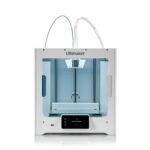 If you have a "Prusa" type printer, the biggest problem with inertia is not going to live your mind, but the weight of your make love OR printing surface.
If you have a "Prusa" type printer, the biggest problem with inertia is not going to live your mind, but the weight of your make love OR printing surface.
Many users obsess over cope weights of 200-300 grams. when they have beds of 750 grs. operating theatre more.
As you leave understand, the hie limit in this type of "Prusa" structures will not be set by the heading itself, but by your printing surface.
That is why it is advisable to enjoyment former types of 3D printers (or rather structures) for extremely high speeds and where it is non the bed that moves in the X axis and moves in the Z axis.
A clear instance can be seen in the Ultimaker 3 printers (in the image above), where the part is produced on a jazz that is descending connected the Z axis throughout its printing.
Extrusion Power (Double Geared wheel)
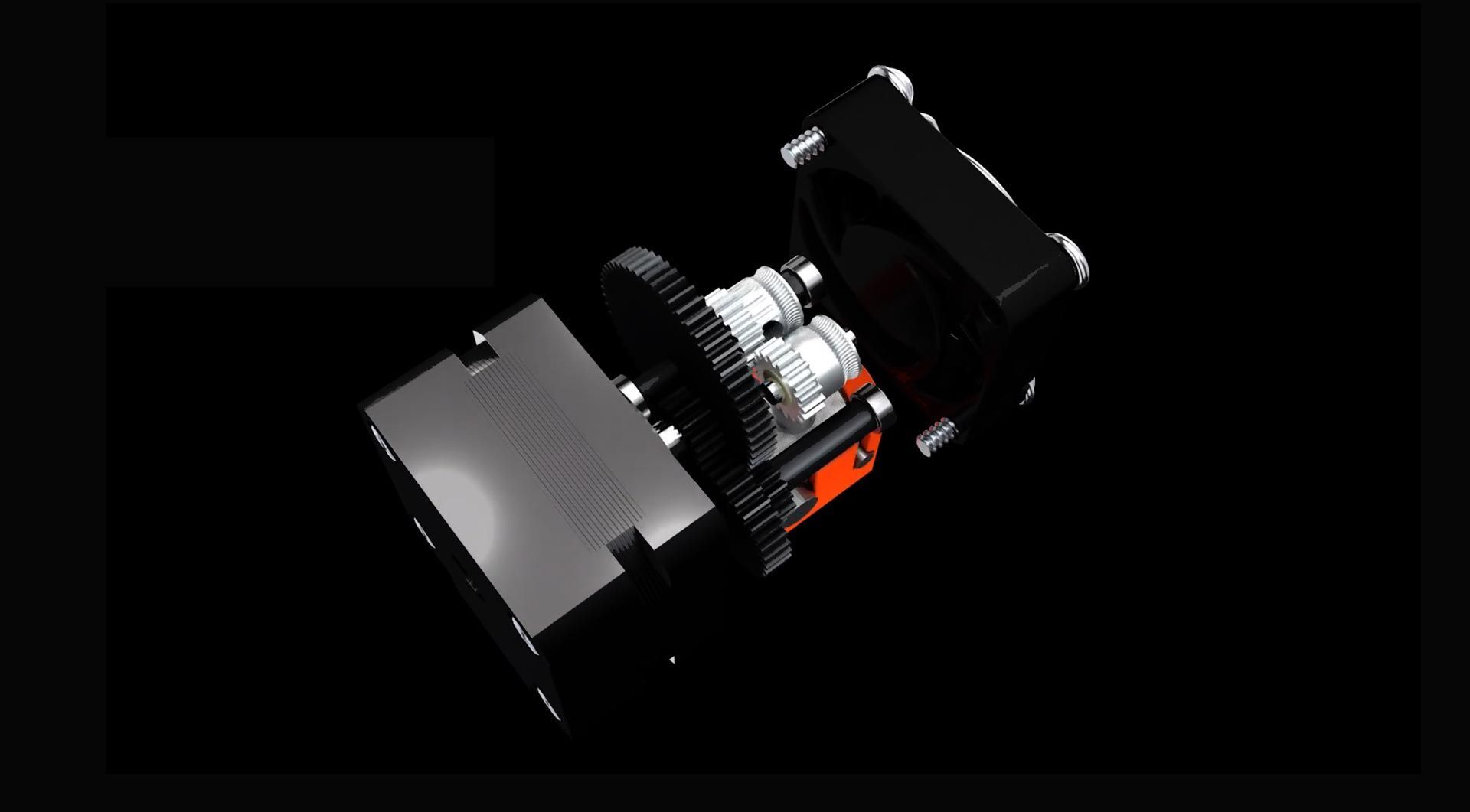
The torque and ratio offered by the designing of its gears is 7:1 and 770mN.m, which means sufficiency power to move our coils without any problem.
This gives the system a completely fluid extrusion, something very portentous – or vital – for a correct yield of parts. And above all thusly that the union between layers is uniform.
Printing process temperature
The BIQU H2 extruder send away reach a maximum temperature of 260ºC, which is more enough for the majority of current filaments (and not of an business nature). This is due to the fact that inside we have a elfin Teflon tube (PTFE) that could degrade at high temperatures.
However, if we need to print at a high temperature we give the axe update IT without any trouble. For this task we essential first replace the extruder fan, obviously with a more underspent one with greater air flow, able of dissipating the considerable increment in temperature (450ºC or 500ºC).
Then we will need to interchange the barrel for an "all auriferous" one, as well as the Snoot for one resistant to high temperatures. All these components can be purchased through with the same BIQU store without whatsoever trouble.
Stir up sink
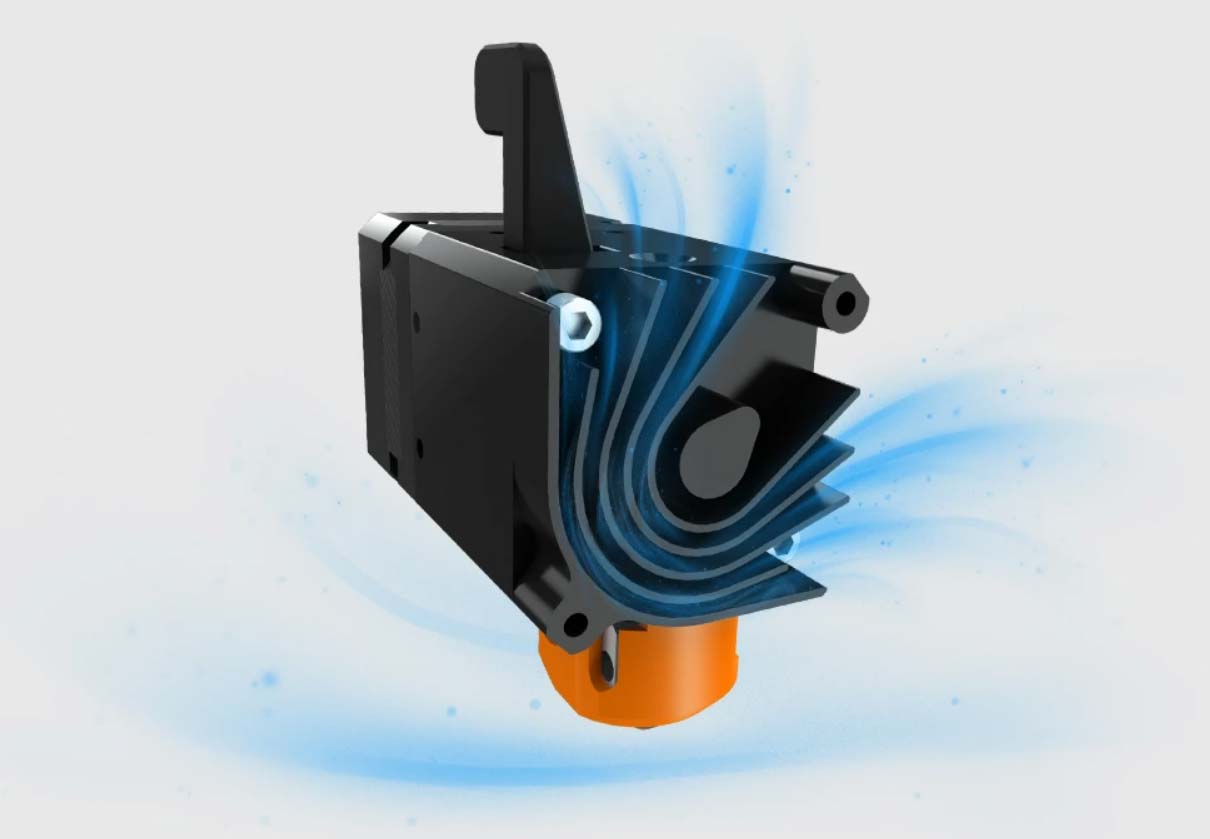
To prevent the heat from rising through the hotend to the atomic number 13 body where the gears and the stepper motor are located, the BIQU H2 extruder makes use of a 3510 fan (lover).
This directly projects a frontal tune flow rate that cools the machined block, which has a tolerant of "rails" that project the menses at 45º degrees upwards to prevent information technology from influencing the impression aerofoil and avoid possible .
Filament pressure governor
As you can see in the images, the extruder has a tinny lever that you must press to insert the filament. These kind of levers commonly possess a coerce regulation jazz.
In this cause, BIQU has elect not to add a pressure regulator connected the filament. In 3DWork we have previously analyzed a high-operation extruder without any typecast of tightening regulation, in the article DyzeXtruder In favou: Analysis of a soprano-performance extruder for professional person-environments, and the results were more lucky.
This diagnostic does not mean any deficiency or impedimenta, simply that they are already factory set with the optimum pressure and preventing the drug user from wrong adjusting the tightening (and marking Oregon prejudicial the filament).
At this point, BIQU has validated the optimal tensity with innumerable filaments and tests (simulations), avoiding that we have to take wish of that calibration, very right in my belief.
Where can I buy the BIQU H2 Extruder?

The BIQU H2 extruder recently went on sale this Wednesday, January 13, so it is now available in case you are interested. Here I leave you a link to Aliexpress and Virago where you take over it available (at this time on offer).
These links are from affiliates, that substance that if you make a purchase through with them, 3DWork will receive a small direction that will help maintain the web site. And of course, this does not entail any Mary Leontyne Pric increase on the item.
| Extrusor BIQU H2 | | | | |
To boot, some time ago at 3DWork we developed the platform Markets.sx, a search engine for 3D printing products with which you can carry through time and carry KO'd co-occurrent searches in different online stores (Amazon, Gearbest, Aliexpress, etc.).
If you want to stress it, you can click on the following banner and information technology will also help keep the project alive.

Comparison of extruders (BIQU H2 / Hemera / Matrix)
In this table you can see all the main characteristics of the BIQU H2 extruder. As a reference, I consume affected the liberty of including the most direct competitors, soh that you can get a global idea of all their characteristics:
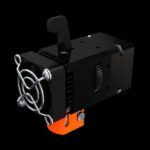 BIQU H2 Extruder | 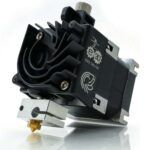 Hemera E3D | 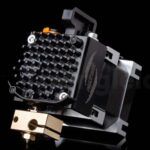 Matrix | |
| Fellowship | BIQU BigTreeTech | E3D | TriangleLabs |
| Extrusion typecast | Duple gear + Tensor | Dual gear + Tensor | Dual train + Tensor |
| Ratio / Torque | Ratio 7:1 Torsion 770mN.m | Ratio 3.32:1 Holding torsion 3.2 kgcm Detent torsion 0.12 kgcm | Ratio ~3:1 Property torsion 29Ncm |
| Weight | 219 grs. (direct) | 388 grs. (address) 327 grs. (bowden) | 357 grs. (direct) |
| Size | 60x35x35mm | 77×44×83mm (direct) 67×44×76mm (bowden) | 66.7x44x78.7mm |
| Maximum Temp. | 260ºC Upgradeable to 500ºC | 285ºC Upgradeable to 500ºC | 285ºC Upgradeable to 500ºC |
| Pushing pull along | 7,5 Kilo. | 10 Kg. | 8,6 Kilogram. |
| Fan | 3510 buff | 4010 fan | 4010 fan |
| Voltage | 24V | 12V / 24V | 12V / 24V |
| Stepper Causative | NEMA14 Motor 1.8º degrees | NEMA17 Motor 1.8º degrees / 1.33A | NEMA17 Motor 1.8º degrees / 1.3A |
| Thermal resistor | NTC 3950 100k Thermistor | PT100 Thermistor | Semitec 104NT-4 R025H42G |
| Heatblock | Phaetus / 24V | V6 E3D / 24V 30W | V6 / 24V 40W |
| Nominal Stairs | 932 steps/mm (16x) | 409 steps/millimetre (16x) | 335,4 steps/mm (16x) |
| Review 3DWork | – | (Enlace directo) | – |
Installing the BIQU H2 extruder
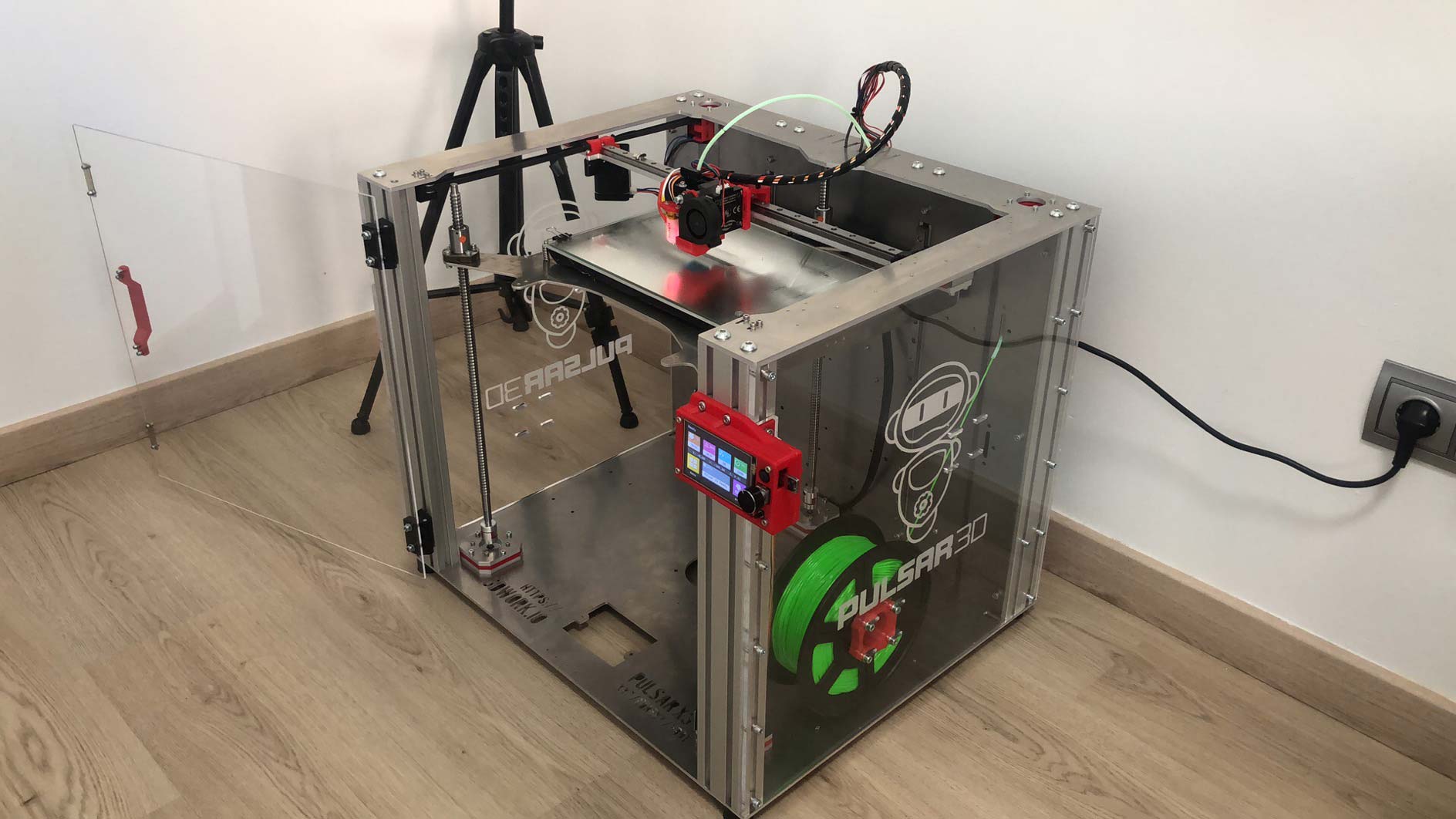
For the installation of the BIQU H2 extruder I had to design my have support for my Pulsar X3 printing machine, since being so recent I scarcely set up whatsoever available parts.
I was fit to site a fan plunk fo from the user eight_heads in Thingiverse, but did not have BLTouch, leveling sensor that I usually mount on each and every one of my printers.
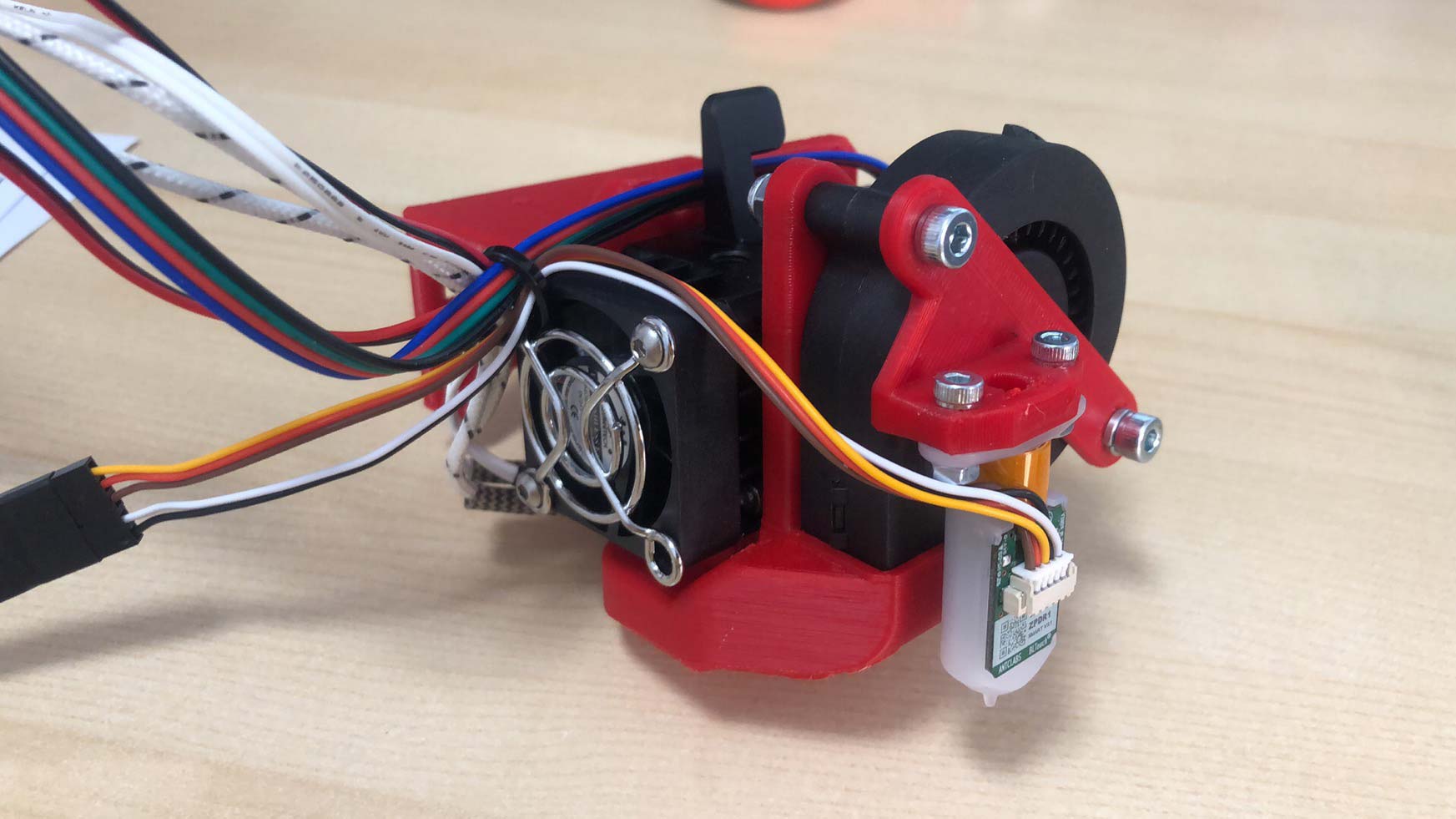 So I got down to work and made a custom one modified to my machine. I have to confess that I did IT in a look sharp and run indeed don't gestate to see any canvas of flows operating room similar things.
So I got down to work and made a custom one modified to my machine. I have to confess that I did IT in a look sharp and run indeed don't gestate to see any canvas of flows operating room similar things.
You can download the two pieces from the following link from my account on Thingiverse. The good thing about it is that both components (Fan 5015 + BLTouch) are anchored directly from the extruder itself, being compatible for the vast majority of 3D printers.
However, I leave do a review shortly and upload a new model. So if it works for you for now, you have it available for download at your entire disposition.
Configuring BIQU H2 extruder in Marlin 2.x
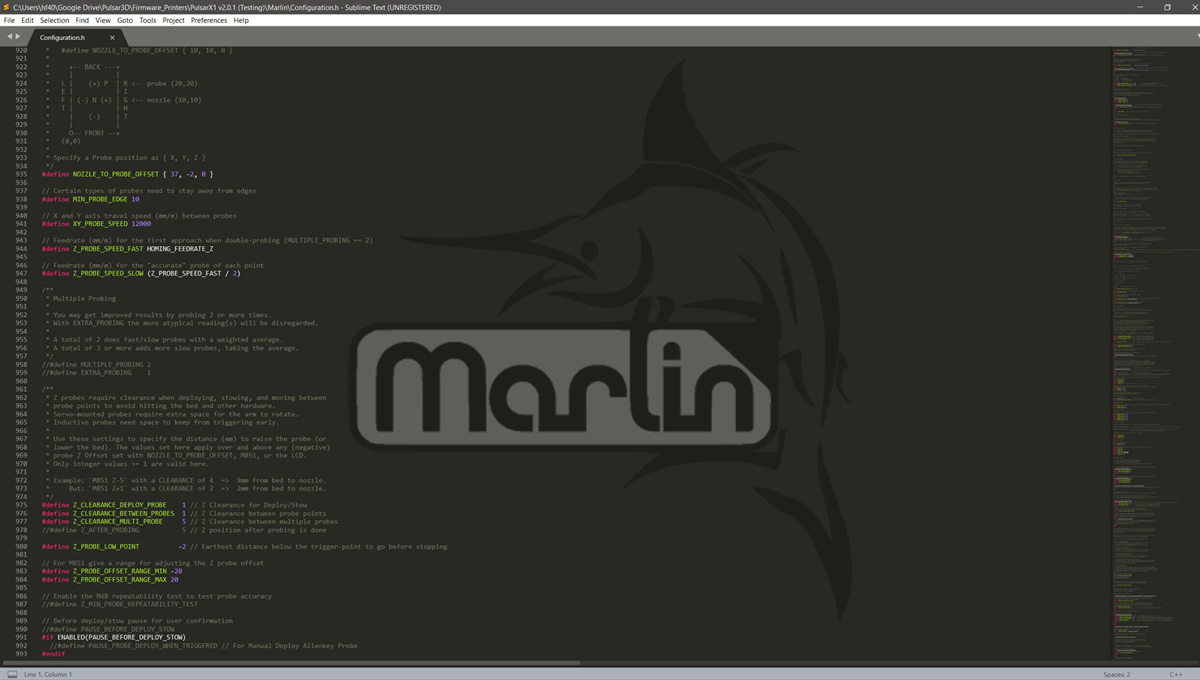
Setting up the BIQU H2 extruder in Marlin should not present excessive problems, since IT is a identical wedge-shaped surgical operation. You will simply take up to modify many parameters, roll up the firmware again and update your board with it.
However, if you are not familiar modifying and compilation Marlin firmwares, I highly recommend that you scan a very interesting article I wrote some time ago called Complete guide: Configure Marlin 2.0.x from slit and not die trying.
And to close the circle, nothing meliorate than to use Visual Studio Code just every bit I show you in this past article Configure and update your 3D printing machine victimization Optical Studio Code and Platform.io.
Returning to the changes to stool, the first thing you should brawl is attend the "THERMAL SETTINGS" section and qualify the time value of the head temperature sensor (or thermal resistor).
In the case of the BIQU H2 extruder, you must select the treasure 5, so in Marlin it would be configured as follows:
#define TEMP_SENSOR_0 5 // Valor del thermistor Hemera #define TEMP_SENSOR_1 0 #define TEMP_SENSOR_2 0 #delimit TEMP_SENSOR_3 0 #define TEMP_SENSOR_4 0 #delimitate TEMP_SENSOR_5 0 #define TEMP_SENSOR_6 0 #define TEMP_SENSOR_7 0 #specify TEMP_SENSOR_BED 1 #define TEMP_SENSOR_PROBE 0 #define TEMP_SENSOR_CHAMBER 0
Nowadays the ideal would be to swear that the thermal protection for your hotend is fully enabled. Just look for the following lines and verify that the first one is configured as follows:
#delimit THERMAL_PROTECTION_HOTENDS // Enable thermal protection for all extruders #define THERMAL_PROTECTION_BED // Enable thermal protection for the heated bed #specify THERMAL_PROTECTION_CHAMBER // Enable thermal protection for the heated chamber
The incoming step will be to calibrate the Pelvic inflammatory disease Tuning corresponding to this new hotend that we have just installed. The PID is an algorithm that Marlin uses that is in charge of managing the temperature of our hotend.
The values will have to make up manually extracted by ourselves with a scant test. I leave you directly a link where you can see how to extract them, bu by doing click hither .
And to stopping point configuring the BIQU H2 extruder in Marlin, we only need to modify the extruder steps per millimeter in its corresponding section of the firmware. Specifically where the E0 playing area appears, which is the extruder esteem.
The new value to add will be 932 stairs, which is the value provided by the BIQU manufacturer, and always having our drivers designed at 16 microsteps. Information technology would look something like this:
/** * Default Axis vertebra Steps Per Unit (stairs/millimetre) * Overturn with M92 * X, Y, Z, E0 [, E1[, E2...]] */ #specify DEFAULT_AXIS_STEPS_PER_UNIT { 160, 160, 800, 932 } Printing process tests with BIQU H2 Extruder
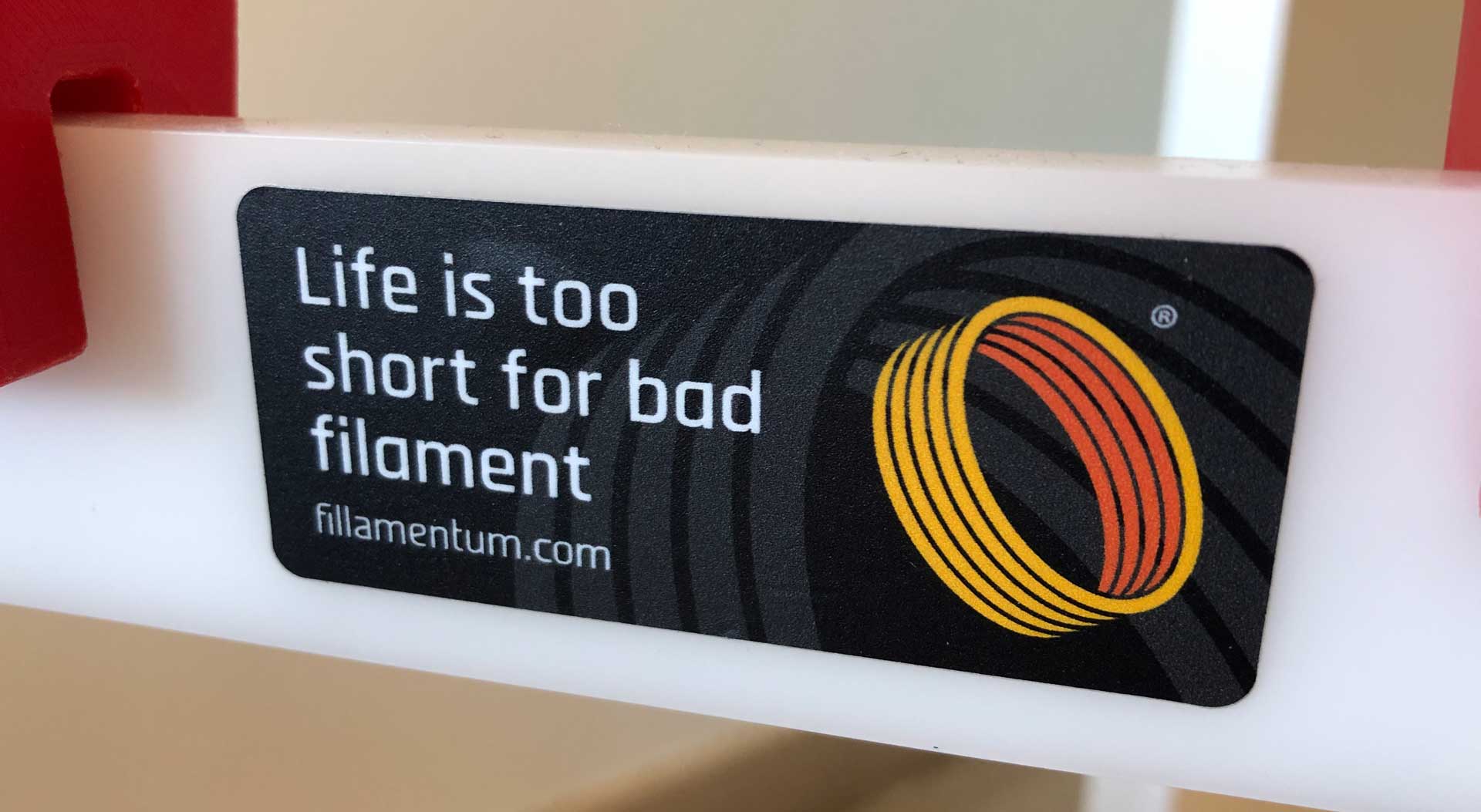
For the printing tests I let used a few spools from our friends at Fillamentum, a company from the Czech Republic that develops premium quality filaments which I always advocate.
Specifically, the filaments of this mar that I used were CPE HG100 "Yellowish brown Brown Bimetal", a PETG variant with better features, and ASA Extrafill "Traffic Chromatic" (Acrylonitrile styrene propenoate), a filum that is on the lift these days.
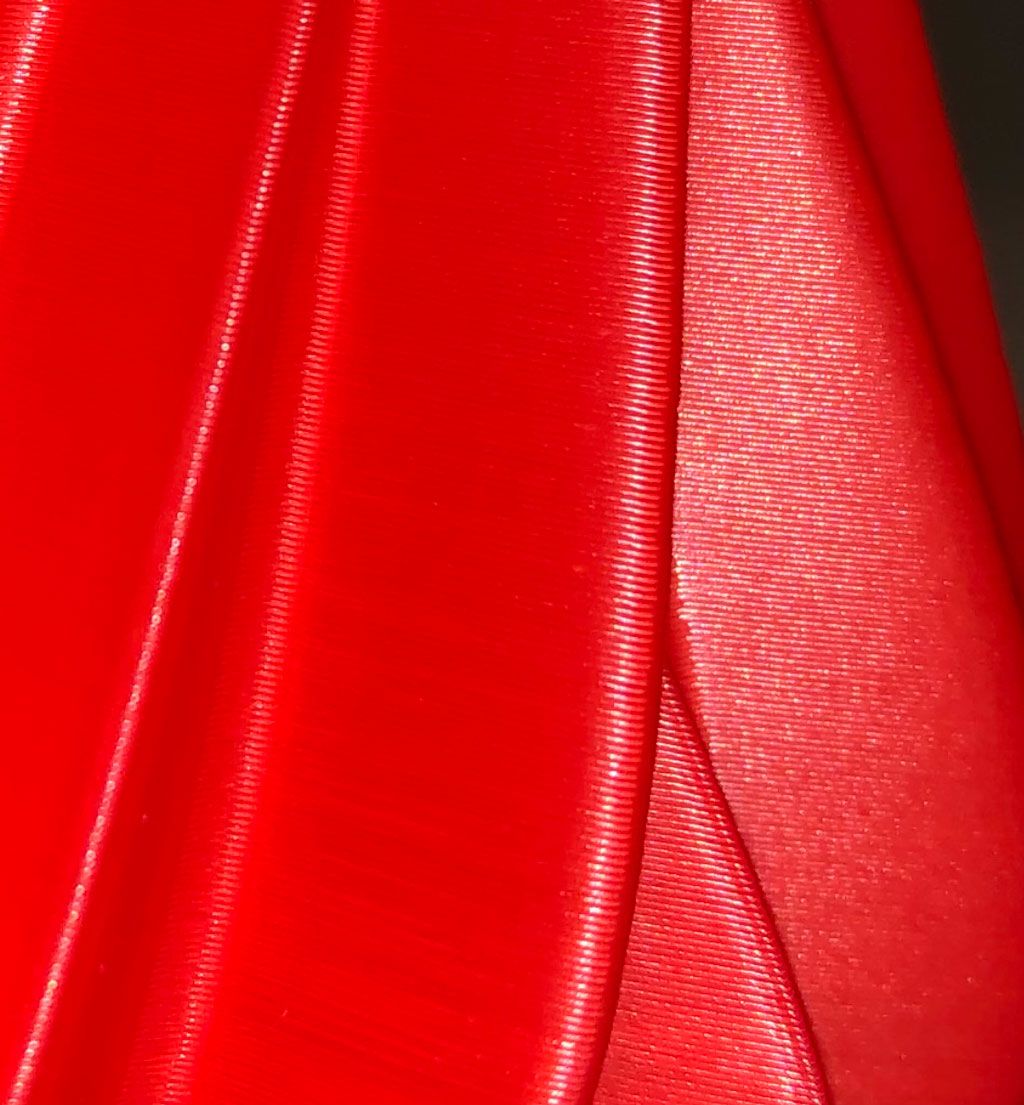 In addition, I also used another generic Red PLA (unknown mark) and a TPU from SUNLU somewhat problematic, since it is around 5 years old.
In addition, I also used another generic Red PLA (unknown mark) and a TPU from SUNLU somewhat problematic, since it is around 5 years old.
Hither at a lower place are some photographs of various written pieces and a detailed photo of a decreased vase in "vase mode".
In this means you will be healthy to celebrate the great union between layers that a continuous flux offers us, something that is really amazing, and incomparable of the most important characteristics of any extruder, besides as its power and weight.
You can click on all the images to view them in more detail:
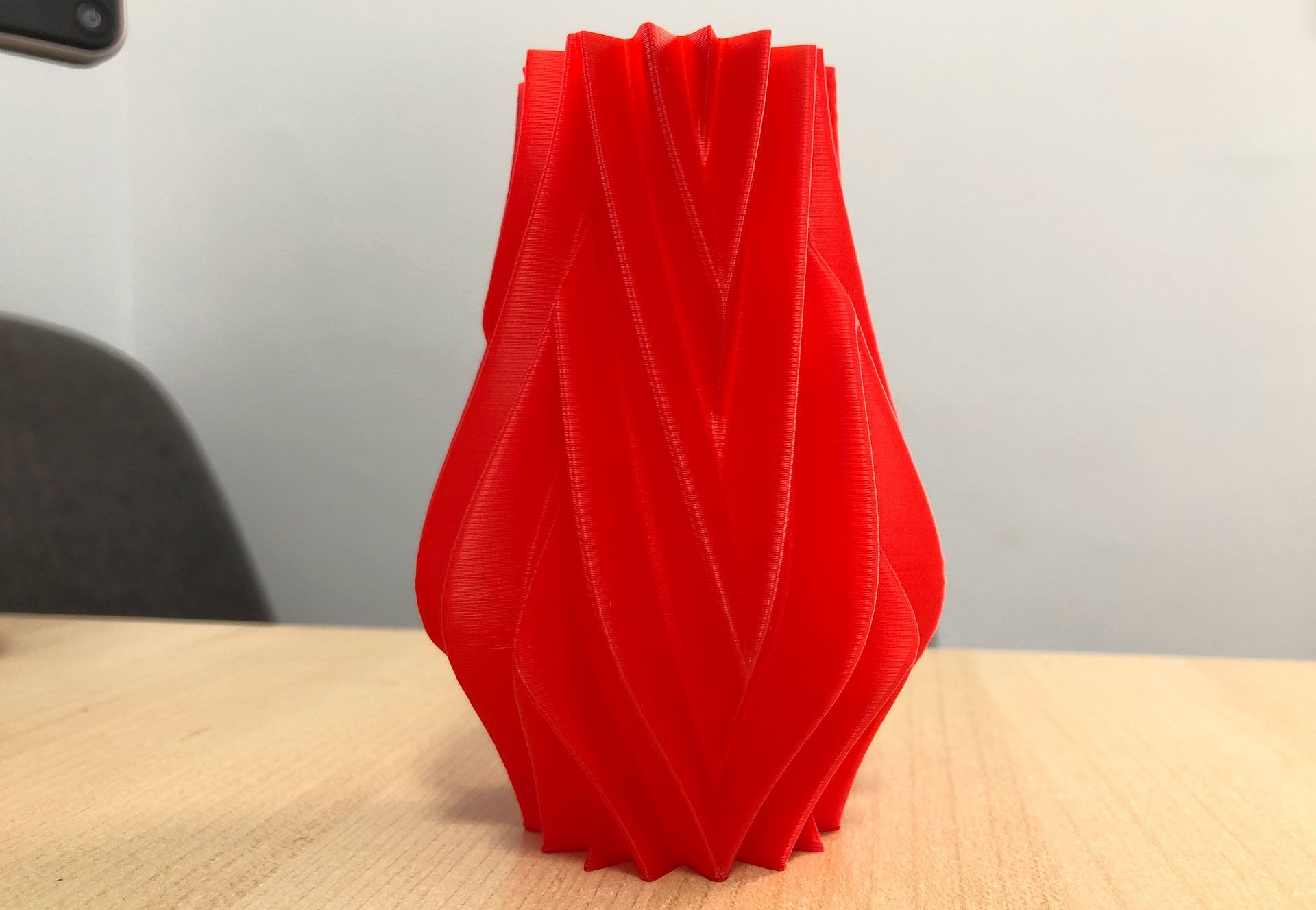
| 3D Mock up | Vase #339 away _Steve |
| Filament type | Bobina PLA Genérico (desconozco marca) |
| Parameters | Spiral vase, 45mm/s, 205ºC/50ºC |
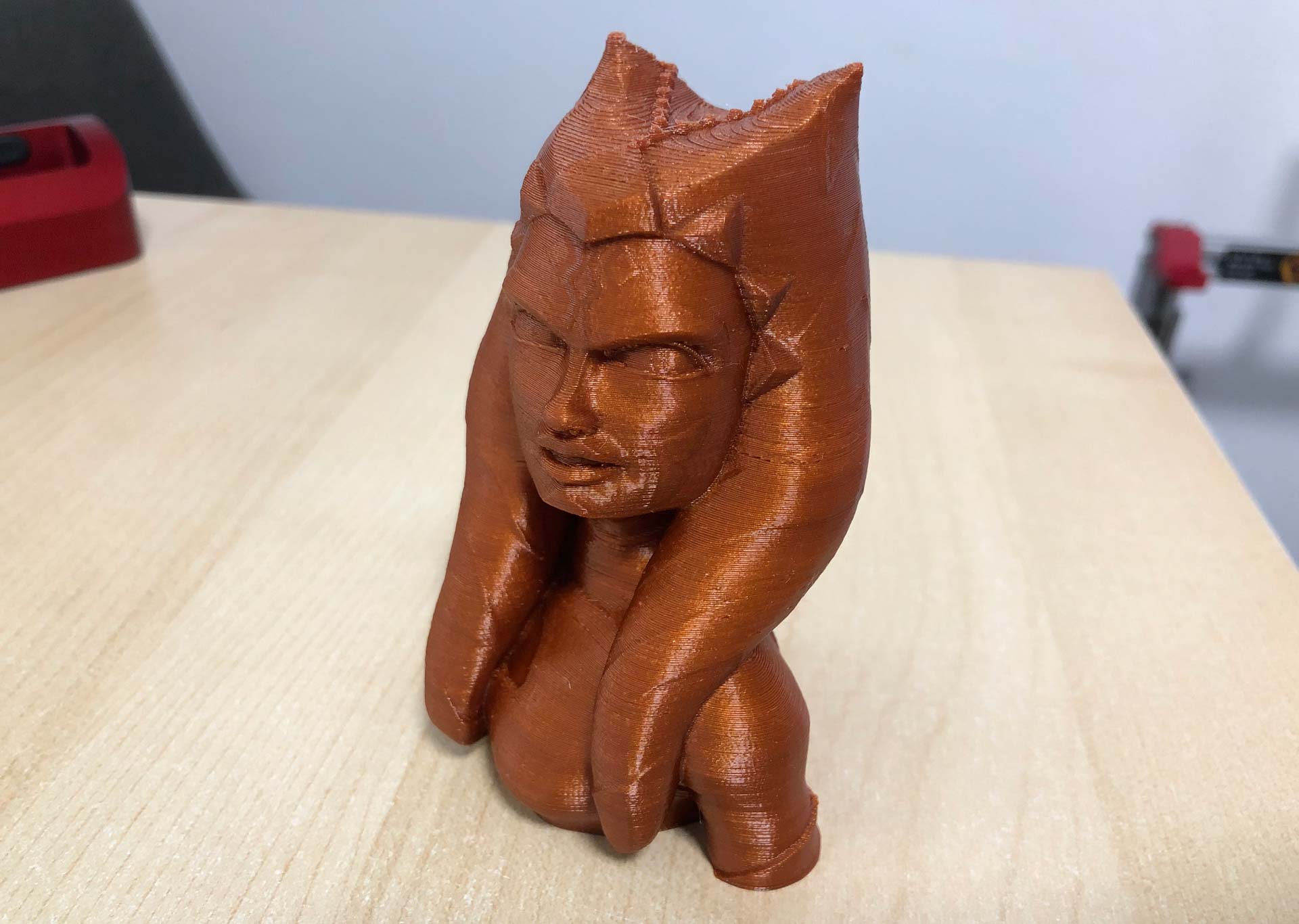
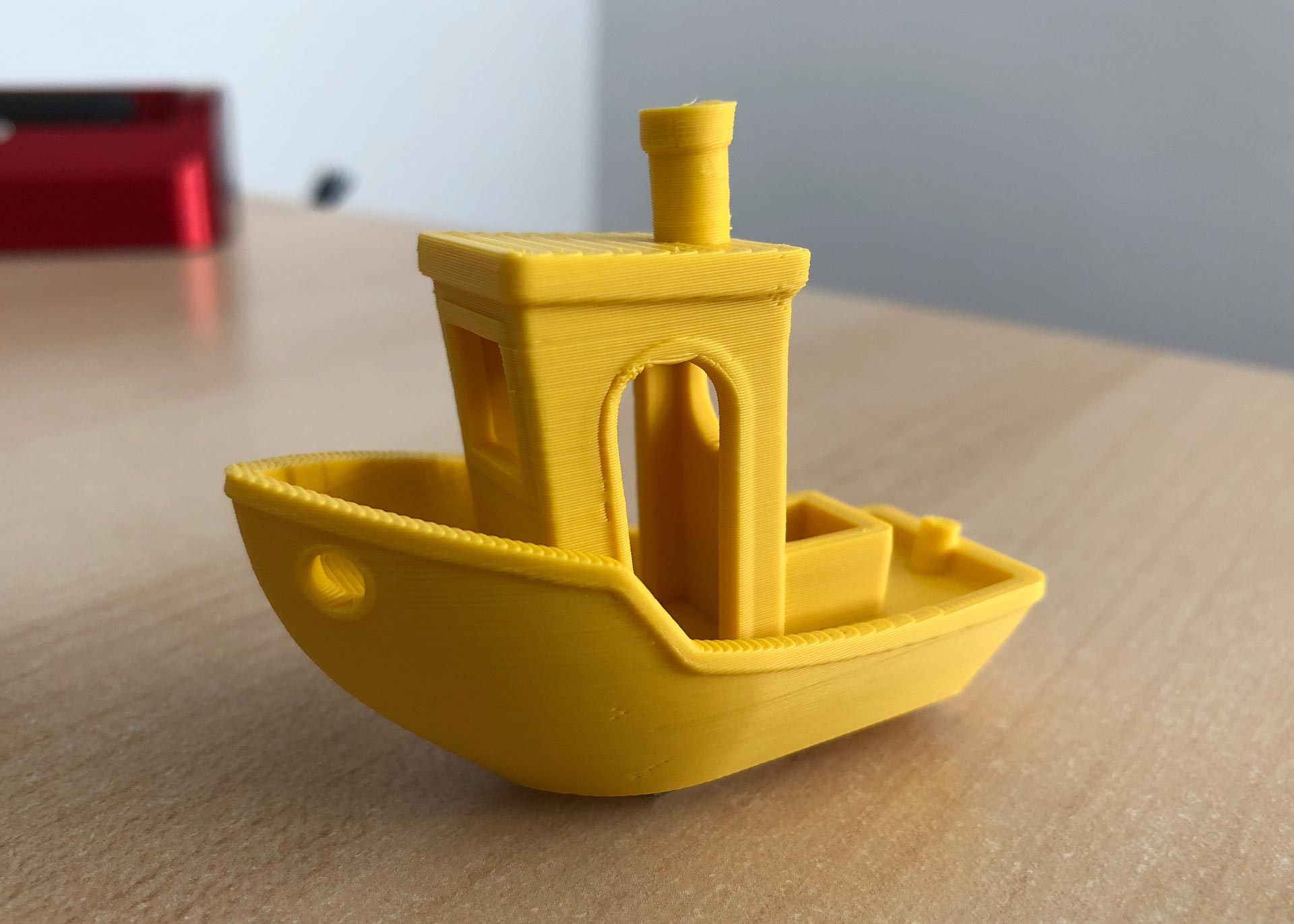
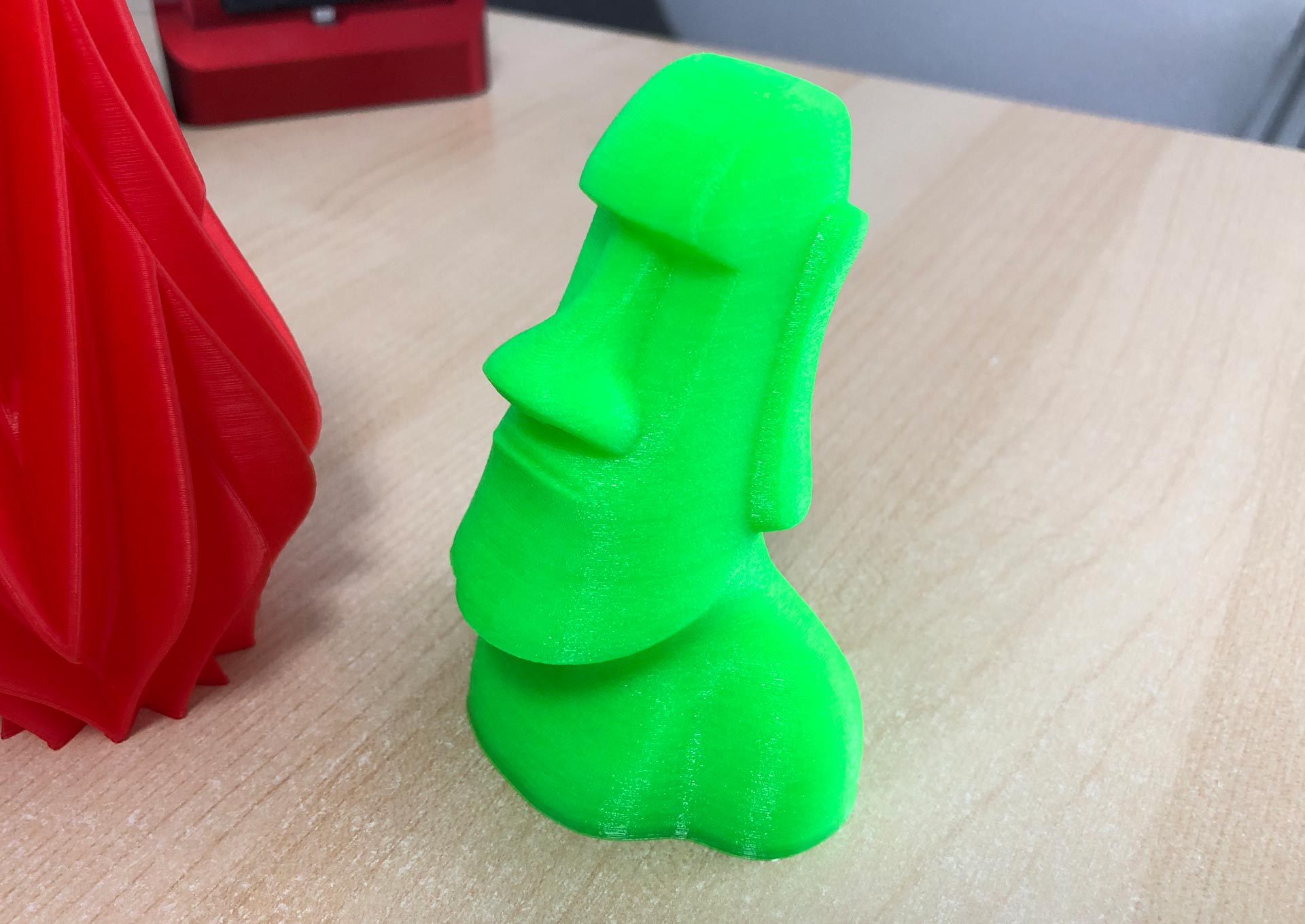
| 3D Model | Moai away ET-Huang |
| Filament typecast | TPU de SUNLU (Verde) |
| Parameters | 30mm/s, 230ºC/50ºC, infill 4% |
Inalterable closing
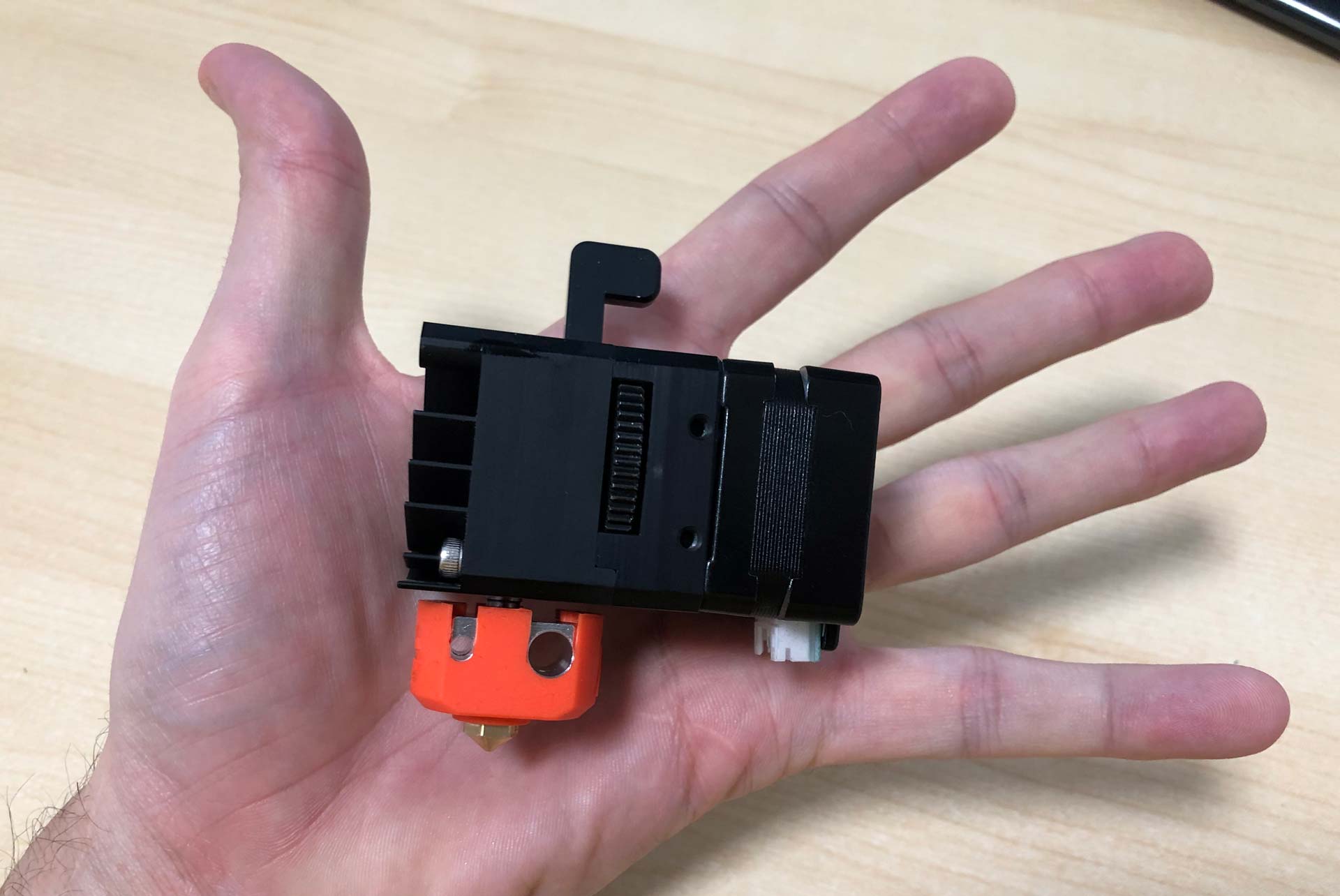
BIQU takes a step up and tries to position itself in the market for gibbosity systems with a high-performance extruder and with a weight not previously seen in this type of integral components (Extruder + Hotend).
Obviously IT seems indisputable that weight is one of the strongest points of the BIQU H2 Extruder, but we can non forget that it brings a powerful torque (7:1 and 770mN.m), an superior thermal dissipation and a jam + beak that comes from Phaetus, recognized manufacturer of superiority hotends and nozzles such Eastern Samoa the Dragon series and DragonFly.
It is also worth highlighting the versatility or flexibility offered by the BIQU H2 extruder to install it in any 3D printer connected the marketplace. Having up to 8 M3 rib holes offers United States umteen possibilities in this compliments as you can imagine.
And not exclusively for the assembly of the extruder itself, but to add other necessary elements later, such As equalisation sensors (BLTouch, Pinda2, IR, causative, etc.), bed fans (fan) or eve neopixels (led strips).
With completely these points in its favor, and the experience of use that I have had with it in the printing tests carried out, this extruder proves to be an excellent selection to be accumulated in whatsoever type of printing machine.
And especially if your main objective is to black and white at extremely shrilling speeds, being able to supplant bowden systems (more problematic in my popular opinion) for the BIQU H2 extruder, and sacrificing really hardly a grams of weight along the elbow room.
Briefly, if you are looking a compact and high-operation extruder that also offers you the hypothesis of operative at very high printing speeds, BIQU H2 extruder is an excellent option to keep in mind.
Indeed nothing more, I enounce bye-bye wishing that this interpretation could take up been of matter to to you. Other cold articles from 3DWork.io:
- Loss date in filaments. Utopia or something that we should demand from all manufacturers?
- QIDI Technical school X-Asset: Industrial-grade, high-performance 3D printing for your desktop
- Phrozen Shuffle XL Lite: Large-scale printing, with 2K resolution and ParaLED technology
- SKR GTR V1.0: Complete analysis and contour with TMC22xx drivers and Sensorless (Marlin 2.0.x.x)
- Adding filament sensing element in SKR electronics (MINI E3, v1.3, v1.4 and v1.4 Turbo)
- Hygroscopy: Wet issues in 3D Printing Filaments
- Billet-processing of 3D parts: Often many resistant and airtight with heat and saltiness
- Marlin Builder: Update with support for version v2.0.6.1 and factory preconfigured firmwares
- Monoprice Cadet: Safe 3D printing for kids and beginners
How to Set Up Extruder Fan Fan With Bed
Source: https://3dwork.io/en/biqu-h2-extruder-review/